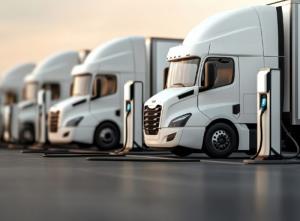A Challenge and Opportunity
Dakoury Godo-Solo is Environmental Defense Fund Project Manager, Electric Vehicle Charging Systems. Lidiya Kassahun is Clean Energy Works Senior Associate of Transportation Decarbonization. Margarita Parra Cobaleda is Clean Energy Works Director of Transportation Decarbonization.
Rural electric cooperatives have always thrived when they’ve looked ahead. Nearly a century ago, they brought power to places investor-owned utilities deemed too costly to serve. Today, they stand at another crossroads.

Load growth is accelerating across the country, driven by artificial intelligence, new manufacturing, data centers, and the electrification of homes and vehicles. Among these, the electrification of medium- and heavy-duty vehicles — delivery vans, school buses, and long-haul trucks — presents both a challenge and an enormous opportunity for rural co-ops.
The challenge is straightforward: these vehicles require large amounts of power, often in locations for which rural grids were not originally designed. A single electric school bus can draw as much electricity as several homes. An electrified truck stop may need a small town’s worth of power.
For co-ops already stretched by aging infrastructure and flat revenues, the prospect of unanticipated high-power demand after years of steady or shrinking load can be daunting. Failure to overcome these challenges risks leaving behind rural communities while urban and suburban communities continue electrifying.

